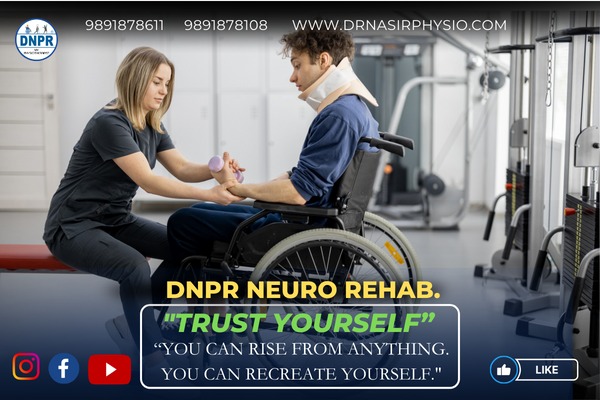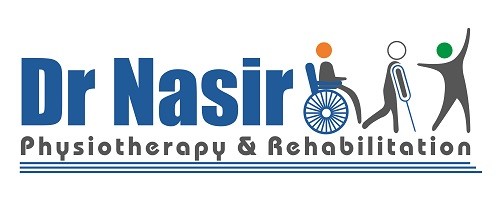
Neurological Rehabilitation – The Art of Recreating
Neurological Rehabilitation| Physiotherapy | Rehabilitation Exercises | Stroke | Paralysis | Cerebral Palsy | Erb’s Palsy | Spina Bifida | Physiotherapist | Occupational Therapist | Speech Therapist
Before understanding Neurological Rehabilitation, we need to have an idea about Rehabilitation first.
What is Rehabilitation?
Rehabilitation is a dynamic process involving Physiotherapists, Occupational Therapists, Special Educators, Speech Therapist, Psychologists etc. through which a person is assisted to achieve optimal physical, emotional, psychological, social and vocational potential in order to maintain dignity, self-respect, independency and a quality of life that is self-fulfilling and satisfying up to the maximum possible extent.
What is Neurological Rehabilitation or Neuro-Rehab?
Neurological Rehabilitation – The Art of Recreating.
It is a complex medical process which aims to assist recovery from a neurological deficit or nervous system injury and to minimize or settle up with the functional variations resulting from it.
Neuro-Rehab is carried out for stroke, paralysis, cerebral palsy, erb’s palsy, radial nerve palsy, brachial plexus injury, autism, delayed milestones, hemiplegia, head injury, multiple sclerosis, DMD, spina bifida, brain tumor, occlusion, SDH, myelopathy, myelitis, meningitis, cerebral ataxia, cerebral atrophy, dementia, balance issues etc
What are the Principles of Neuro-Rehab?
The major Principles of Neuro-Rehab are as follows-
- Rehabilitation should begin from day 1 of onset of illness.
- Restoring the independence or to regain his\her pre-illness.
- Maximizing independence within the limits of disability
- Individual goal realization and setting
- Active participation by the patient
- Facilitated activities of daily living
- Motivate the patient and help him\her to attain social independence
What are the goals of Neuro-Rehab?
The goals of Neuro-Rehab are-
- Physical Independence
- Mobility
- Social Integration
- Occupational Integration
- Psychological Support
What are the different types of Neuro-Rehabilitation?
Neuro-Rehab is an umbrella term for
- Medical Rehabilitation– Restoration of structure and function.
- Vocational Rehabilitation– Restoration of capacity to earn a useful and decent livelihood.
- Social Rehabilitation– Restoration of family and social relationships.
- Psychological Rehabilitation– Restoration of personal dignity and confidence.
What are the approaches of Rehab?
- Institution based
- Outreach based
- Community Based
Who all are a part of Rehab team?
The Rehab team comprises of-
- Medical Team
- Psychiatrist
- Orthopaedic surgeon
- Neurologist
- Neuro-surgeon
- Plastic Surgeon
- Paediatrician
- Obstetrician
- Geneticist
- Cardiologist
- Cardiac Surgeon
- General Surgeon
- Oncologist
- Ophthalmologist
- Paramedical Team
- Physiotherapist
- Occupational Therapist
- Creative Movement Therapist
- Prosthetist
- Rehabilitation Nurse
Which is the best suitable approach for Neuro-Rehab?
Bobath’s Neurodevelopmental Treatment Approach has been accepted world wide as one of the best approach for Neuro Rehab.
- The approach is mainly used for patients suffering from hemiplegia, as a result of stroke, brain injury or cerebral palsy etc.
- It mainly focuses on the normalization of muscle tone, posture, neurological functions and balance issues.
What are the Physiotherapy Interventions used in Neuro-Rehab?
- The treatment line for Neuro-Rehab has a very vast exposure, it depends clearly on the patient’s condition and availability of resources.
- Neuro-Rehab is one of the most dynamic approaches as it plays directly with the brain but is proven to have the most long lasting results, which subsequently take time.
DNPR has a complete team of Neuro-Rehab experts, who focus on the goal setting and assurance towards recovery of Neuro patients.
The Treatment includes-
- Passive Exercises
- Active Exercises
- Active-Assisted Exercises
- Resisted Exercises
- Muscle Strengthening Exercises
What is the treatment for Pain or Inflammation?
The best-suited treatment would be
- Heat Therapy- Hot Pack, IRR, Paraffin Wax Bath, Hydrotherapy, SWD
- Cold Therapy
- Electrotherapy- TENS, Traction, UST, LASER etc.
How to improve Speech in Stroke Patients?
For stroke patients, a Speech Therapist can be appointed, DNPR has quite experienced speech therapists which suggest on adapting special techniques for swallowing and blow-out exercises, to improve the speech.
Leave a reply

Your blog is a masterpiece in its own right.
Reply